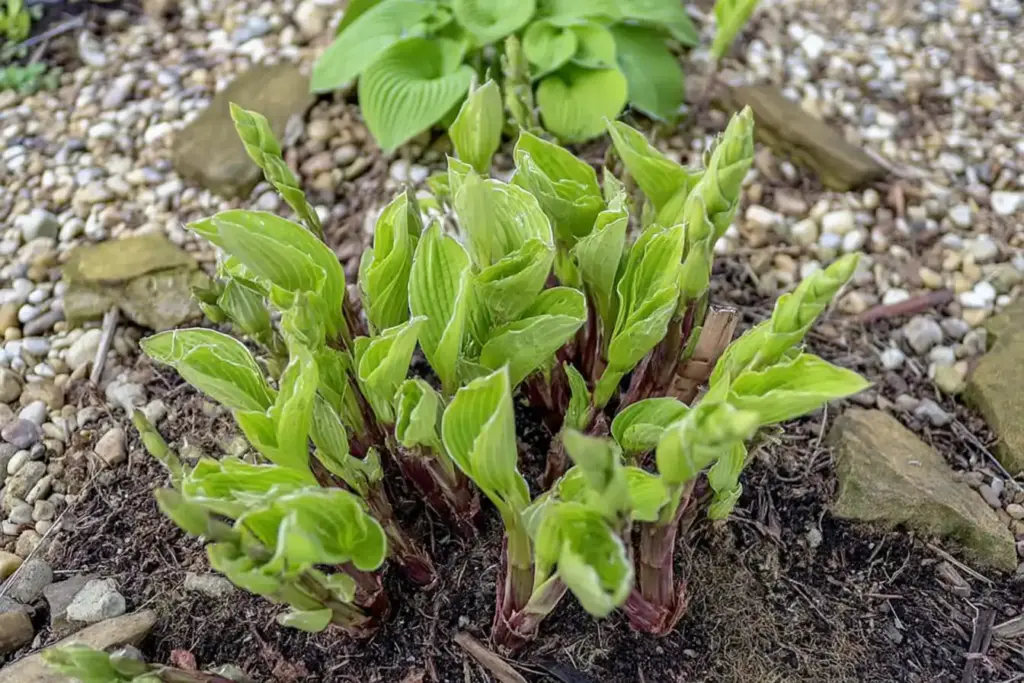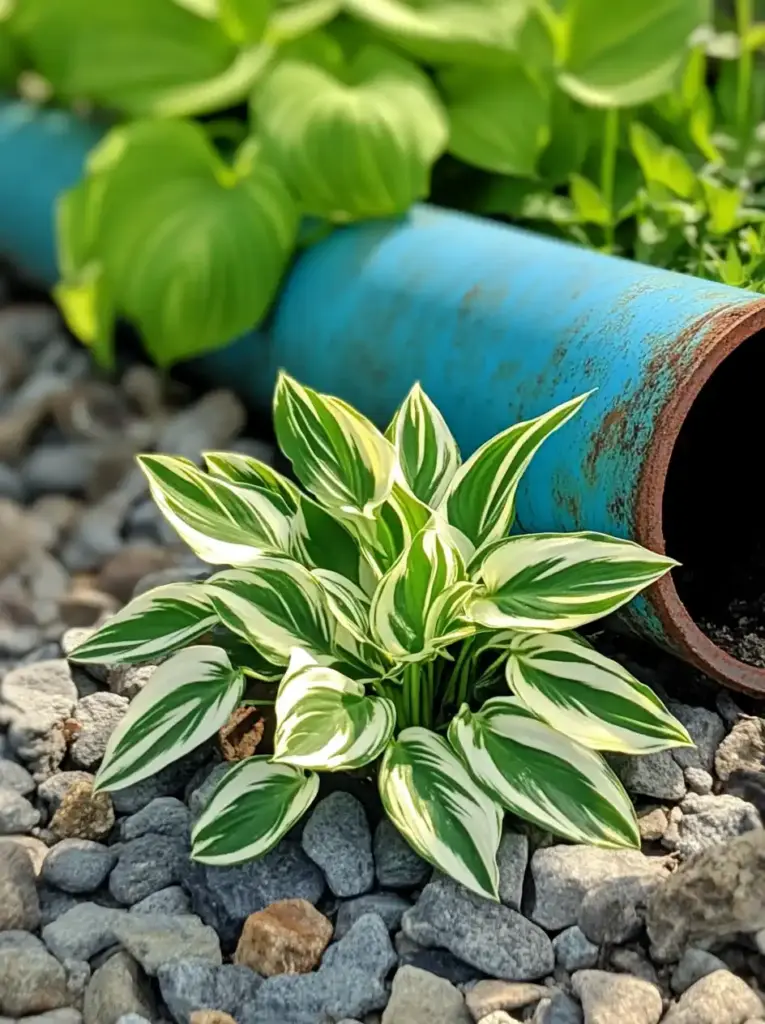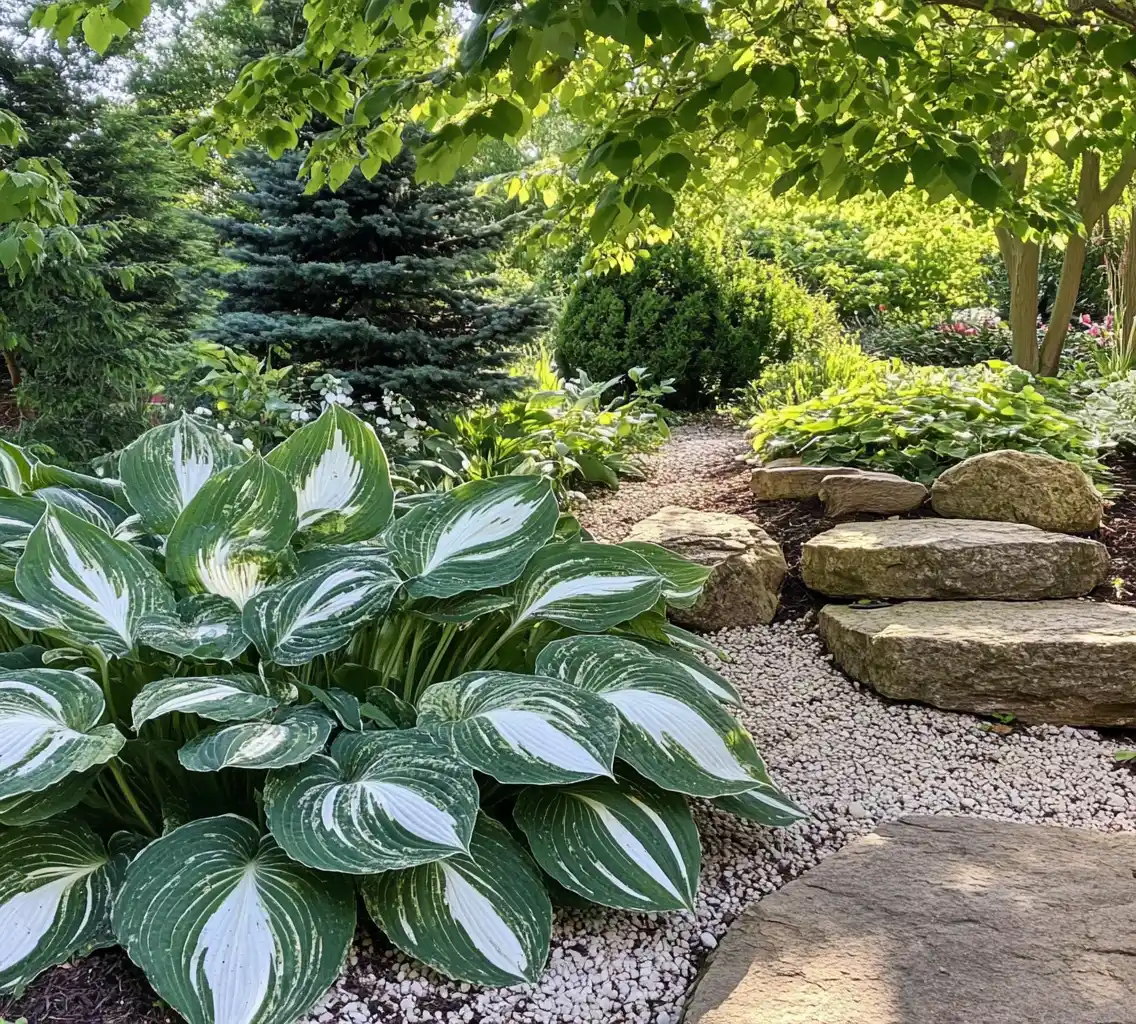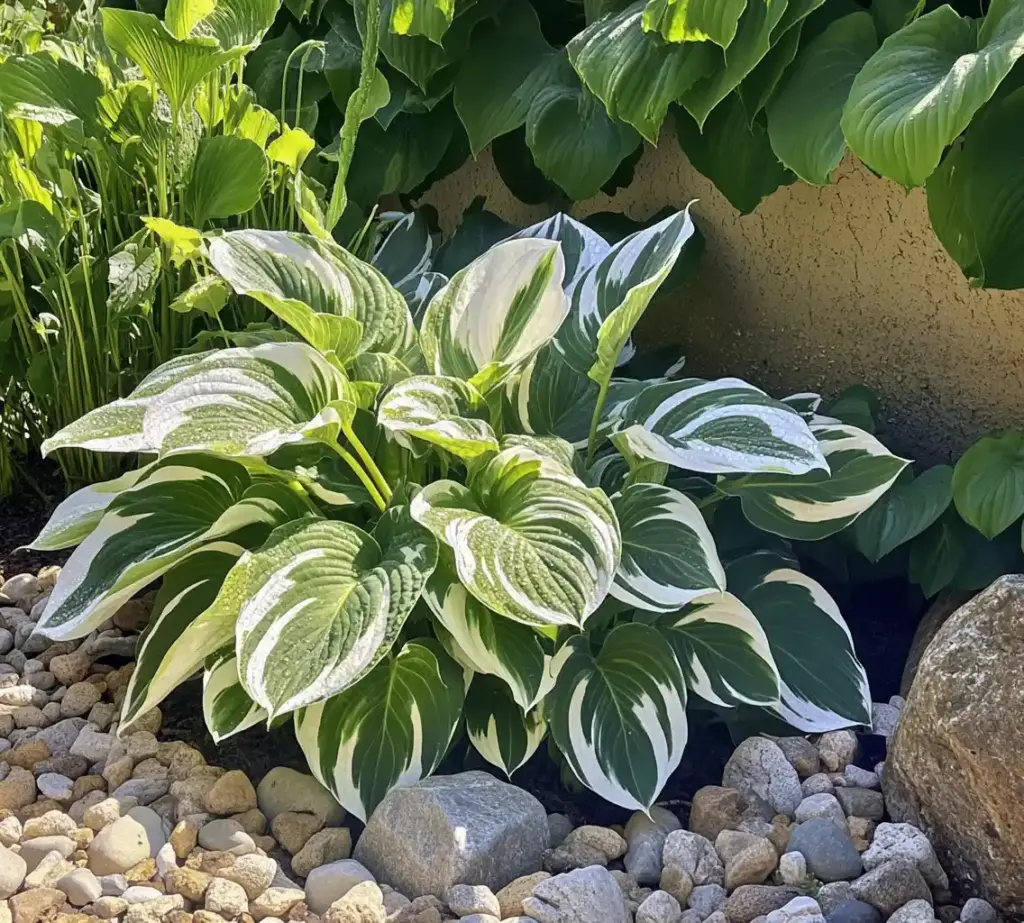If you’re searching for stunning and low-maintenance outdoor potted plants, hostas should be at the top of your list. These shade-loving perennials are truly the hidden gems of the gardening world. Whether you’re decorating a shaded front porch with flower pots, designing a peaceful backyard retreat, or filling containers on a balcony with filtered light, hostas deliver lush, sculptural foliage that thrives with minimal effort.
What makes hostas exceptional as outdoor potted plants is their resilience. These hardy beauties come in countless varieties—ranging in size, color, and texture—and they’re nearly indestructible. Even if neglected, they bounce back strong. From small-space gardeners to seasoned plant lovers, anyone can appreciate the elegance and ease that hostas bring to shady container gardens.
In this complete guide, you’ll learn everything you need to succeed with these low-maintenance outdoor potted plants—from selecting the best hosta varieties to proper watering, fertilizing with Epsom salts, and protecting them from pests like slugs and deer. Ready to transform your containers into a shaded oasis? Let’s dig into the effortless charm of hostas.
Table of Contents
🌿 Hosta Benefits and Characteristics
If you’re looking to add year-round visual interest without daily upkeep, hostas are one of the best low-maintenance outdoor potted plants for shade. These leafy perennials bring elegance and texture to any shaded garden nook or patio container, making them a favorite among shade gardeners across North America.
✅ Why Gardeners Love Hostas
- Shade-Tolerant Superstars: Hostas flourish in low-light environments where other plants struggle. They’re ideal for areas under trees, beside fences, or on shaded patios.
- Incredible Variety: With foliage ranging from deep green to silvery blue, creamy white, or golden yellow, and leaf shapes that can be heart-shaped, puckered, or ruffled, hostas offer nearly endless visual combinations.
- Wide Size Range: Hostas range from miniature varieties perfect for small pots to giant selections with towering 5-foot flower scapes that command attention.
- Incredible Resilience: Hostas are forgiving—even if you forget to water or transplant them awkwardly, most will bounce back with time and care.
- Low-Care and Long-Lasting: Once established, hostas require minimal intervention. They return every year bigger and better, maturing into impressive displays over 2–3 seasons.
If you want outdoor potted plants that don’t ask for much but give back lush beauty year after year, hostas are a brilliant choice.
🪴 Essential Hosta Growing Tips
For gardeners in search of low-maintenance outdoor potted plants for shade, hostas check every box—as long as you set them up for success. Here are the most important tips to help your hostas thrive in containers or in the ground.
🌱 1. Choose the Right Variety for Your Light Conditions
While hostas are shade lovers, not all are created equal.
- Full-shade varieties do best in deeply shaded areas, like under thick tree canopies.
- Sun-tolerant types (such as blue- or yellow-leaved varieties) can handle morning sun but need protection from harsh afternoon rays.
📝 Tip: Always check plant labels or ask your nursery which hosta varieties are best suited to your garden’s lighting.
🧪 2. Use the Right Soil
Hostas love rich, loamy, and slightly acidic soil (around pH 6).
- Avoid dense, compacted clay soils
- Amend with compost or peat moss to boost drainage and nutrients
- For containers, choose a high-quality potting mix with organic matter
💧 3. Watering Wisely
Consistent moisture is key—especially for newly planted hostas or those in pots.
- Water regularly during hot or dry spells
- Best times: Morning or early evening to prevent evaporation
- Keep soil evenly moist, but not soggy
💡 Container tip: Ensure pots have drainage holes to avoid root rot.
🌿 4. Fertilize with Epsom Salts for Lush Growth
One of the easiest ways to boost your hosta’s size and vibrancy? Epsom salts.
- Mix 1 oz of Epsom salt into 1 gallon of water
- Apply in early spring as leaves begin to emerge
- Repeat monthly for best results
🍂 5. Mulching Matters
Mulch helps conserve moisture, control weeds, and insulate roots.
- Use wood chips, shredded bark, or leaf mulch
- In containers, a layer of pebble mulch also prevents splash and retains moisture
- In-ground hostas benefit from mulch year-round; just keep it away from the crown
⏳ 6. Be Patient—Greatness Takes Time
Hostas may take 2–3 years to reach their full potential.
- Mature plants develop richer colors and more dramatic foliage
- Avoid over-pruning or frequent moving
- Buying established plants or divisions can speed up the process
🌿 Dividing & Transplanting Hostas: When and How

One of the most rewarding features of hostas—especially as low-maintenance outdoor potted plants for shade—is how easily they can be divided and transplanted. Whether you want to propagate more plants or rejuvenate an old clump, dividing hostas is both economical and straightforward.
🔄 When to Divide Hostas
Timing makes all the difference.
- Best time: Early spring, just as new shoots emerge, or early fall, about 4–6 weeks before your first frost.
- Avoid: Dividing in summer—plants may wilt, stress, and underperform for the rest of the season.
💡 Fall divisions give roots time to establish before winter and result in a stronger show the following spring.
✂️ How to Divide Your Hostas
- Dig carefully around the root ball, aiming to lift as much of it intact as possible.
- Gently separate the clump into smaller sections—each should have several shoots and healthy roots.
- Replant immediately in well-prepared soil or containers, and water deeply.
🌱 Bonus Tip: Transplants often look sparse in year one but bounce back quickly by year two. Don’t be discouraged!
Dividing hostas is a fantastic way to expand your shade garden or fill new containers with gorgeous, textured foliage—without spending a dime.
🛡 Pest Control Tips for Hostas
Even the toughest low-maintenance outdoor potted plants for shade like hostas aren’t entirely pest-proof. While chickens and many insects tend to leave them alone, two persistent threats stand out: deer and slugs. Fortunately, there are easy, natural ways to defend your plants without resorting to harsh chemicals.
🦌 Deer Defense: Homemade Hot Pepper Spray
Deer love munching on hosta leaves, especially the tender young ones. But you can make your plants unappetizing with a simple deterrent:
DIY Hot Pepper Spray
- Mix 2 tablespoons of hot pepper flakes or cayenne pepper with 1 quart of water
- Add a few drops of dish soap (helps the solution stick)
- Spray directly onto hosta leaves every few days, especially after rain
🌧 Reapply regularly, as rain will wash it off. Consistency is key!
🐌 Stop Slugs in Their Tracks
Slugs are another common enemy, especially in damp, shady conditions. They chew unsightly holes in leaves—but these tricks help keep them away:
- Beer Traps: Bury shallow dishes of beer at soil level. Slugs are attracted to the scent and drown.
- Crushed Eggshells: Sprinkle around the base of hostas. The sharp edges irritate and deter slugs naturally.
- Copper tape (for containers): Slugs won’t cross it due to a mild electric charge it creates.
🍃 Good air circulation and proper mulching also discourage slug infestations.
With these simple solutions, your hostas will stay healthy, hole-free, and picture-perfect—even in tough conditions.
🌼 Recommended Hosta Varieties to Grow

Choosing the right variety is half the fun of growing hostas. Whether you prefer compact charmers for containers or bold foliage for dramatic borders, there’s a hosta for every shady spot.
Here are five popular, easy-to-grow hostas that offer beauty, resilience, and variety—perfect for both garden beds and containers:
1. ‘Halcyon’ – Dusty Blue & Sun-Tolerant
- Size: Medium (up to 30″ wide)
- Foliage: Elegant, matte blue leaves
- Perk: Holds color even in partial sun—great for brighter shady areas
- Use: Eye-catching centerpiece in a pot or garden border
2. ‘Tokudama Flavocircinalis’ – Striking Contrast
- Size: Medium
- Foliage: Blue-green with wide yellow margins; slightly cupped
- Growth Rate: Slow, but well worth the wait
- Use: Adds layered texture to shady patio pots
3. ‘Regal Splendor’ – Tall and Architectural
- Size: Large; upright vase-shaped form
- Foliage: Blue-gray with creamy-white edges
- Bonus: Produces tall, elegant flower scapes
- Use: Ideal for larger containers or to add vertical interest
4. ‘Little Sunspot’ – Small but Striking
- Size: Small
- Foliage: Yellow centers with green margins; seersuckered texture
- Color Change: Yellow fades to chartreuse as the season progresses
- Use: Perfect for pots, edging, or tucking into small shady nooks
5. H. montana ‘Aureomarginata’ – Big and Bold
- Size: Large
- Foliage: Dark green with irregular gold margins; glossy finish
- Feature: Cascading habit—gets more dramatic each year
- Use: Excellent for statement containers or focal points
🌿 Whether you’re planting one or five, hostas bring bold, easy-care beauty to your shady spaces.
💡 Bonus Tips: Frugal Ways to Get Hostas + Winter Prep
Hostas may look like designer plants, but building your collection doesn’t have to be expensive. In fact, these low-maintenance outdoor potted plants for shade are among the easiest perennials to share, swap, and grow for free.
💰 Budget-Friendly Ways to Get Hostas
- Ask Around: Friends, neighbors, or local gardening groups often divide their hostas in the fall. A polite inquiry could land you several plants—completely free.
- Watch for Fall Clearance: Many garden centers discount perennials heavily at season’s end. Don’t be afraid to grab smaller or slightly tired-looking hostas; they’ll bounce back next spring.
- Online Swaps or Plant Sales: Community Facebook groups and local gardening clubs often organize trades or $1-per-pot events.
🌱 Even a single mature hosta can provide multiple divisions over time, turning one plant into a whole shade garden.
❄️ Winter Care for Hostas in Containers
Potted hostas are just as tough as in-ground varieties, but they need a little help overwintering:
- Before Frost: Plant or transplant before the last frost to give roots time to settle
- Mulch Over Winter: Use dried leaves, straw, or pine needles to insulate roots—especially for containers left outdoors
- Water Occasionally: Don’t let the soil dry out completely during mild winter spells
- Move Pots: If possible, relocate containers to a protected, unheated area like a shed or garage
Come spring, remove mulch, refresh the top layer of soil, and get ready for a vibrant return!
🌟 Conclusion
If you’re on the hunt for low-maintenance outdoor potted plants, hostas are a dream come true for every gardener. Their lush foliage, endless variety, and no-fuss nature make them a standout choice—especially in areas where other plants struggle. Whether you’re filling shaded porch containers, tucking them along tree lines, or sharing divisions with friends, hostas deliver year after year.
With just a little planning and the right growing conditions, these durable perennials will reward you with striking textures and rich green hues. Pair them with other shade-tolerant outdoor plants like ferns or mix them into container displays for full-season interest. Their versatility makes them one of the easiest and most rewarding low-maintenance perennials you can grow.
Start with a single hosta in a decorative pot—and don’t be surprised when your collection quickly grows. For anyone creating a relaxing, low-effort garden, hostas are the ultimate outdoor potted plants that thrive in shade with style and grace.
❓ Frequently Asked Questions (FAQ)
1. Can hostas be grown in pots?
Yes! Hostas grow beautifully in containers, making them perfect low-maintenance outdoor potted plants for shade. Just ensure the pot has good drainage and use a rich, loamy soil mix.
2. How much sunlight do hostas need?
Hostas prefer shade, but some varieties tolerate morning sun. Avoid harsh afternoon sunlight, which can scorch their leaves—especially for thin or light-colored types.
3. How often should I water potted hostas?
Keep the soil consistently moist, especially during hot or dry periods. Water in the morning or evening, and avoid letting the soil dry out completely.
4. Do hostas come back every year?
Yes, hostas are perennials. Once established, they return bigger and better each spring with very little care required.
5. What is the best time to divide hostas?
Divide hostas in early spring or early fall. Avoid summer, as divisions may struggle with heat stress and root shock.
6. How do I protect potted hostas in winter?
Move pots to a sheltered area or mulch heavily with leaves or straw. If left outside, make sure containers are weatherproof and have good drainage.
7. What pests affect hostas and how can I stop them?
Deer and slugs are the main pests. Use hot pepper spray to deter deer and beer traps or crushed eggshells to control slugs.


